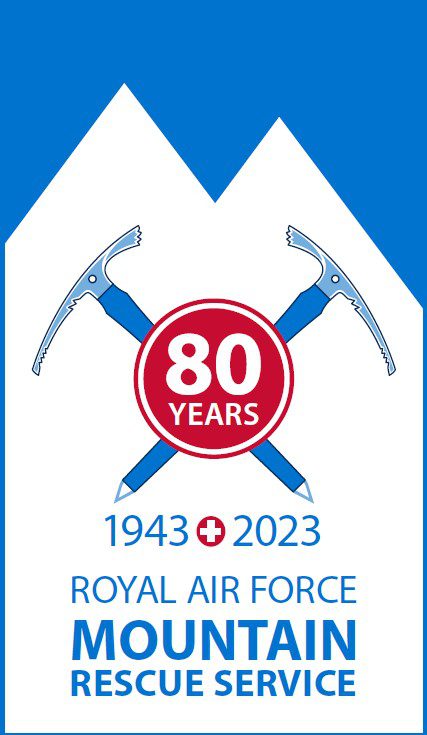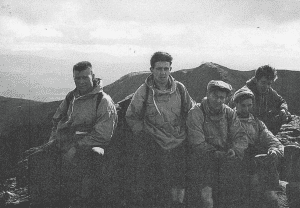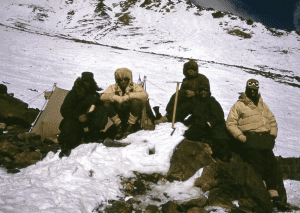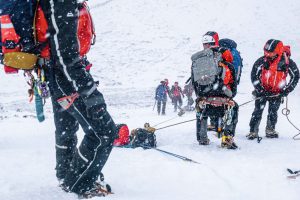RAF Mountain Rescue Service celebrates 80 years …

RAF Mountain Rescue Service celebrates 80 years …
… of live saving for military and civilian personnel.
The Royal Air Force Mountain Rescue Service (RAF MRS) is a blue light emergency service for the provision of medical aid in the mountains, whether rescuing downed aircrew, missing military personnel or civilians. Since humble beginnings in 1943 at RAF Llandwrog, Gwynedd, the MRS has rescued and saved many lives at Aircraft Post Crash and Incident Management (APCIM) call-outs and by assisting civilian MRT counterparts. Time and equipment may have changed significantly throughout the last 80 years, but the MRS’s people and mindsets haven’t.
In early 1942 an RAF Station search party, whom at the time made their own ad-hoc arrangements to locate and provide medical treatment for downed aircrew, found direction under Flight Lieutenant George Graham, Station Medical Officer at RAF Llandwrog. A year later, after Flight Lieutenant Graham realised the equipment and expertise were inadequate to counter the number of aircraft crashes in Eryri Snowdonia, the RAF saw the inauguration of three Station MRTs for the coordination of aircrew rescues. Despite the loss of 571 lives in 220 aircraft crashes in 1943, the foundations of the MRS had been laid. The experience, hard work and enthusiasm of the early pioneers has remained pertinent over time that has seen RAF MRTs based in Cyprus, Hong Kong and the Middle East, and been deployed on overseas call-outs including Borneo, Albania and Alaska.
In the early years, many of the teams were not trained for technical rescues on crags; the nucleus of the teams consisted of fell and hill walkers rather than climbers and mountaineers. Experience showed that a practical knowledge of mountaineering was essential to the success of rescues. Thus, the development of individual rock and winter climbing skills has been actively included within the MRS’s training syllabus, having a substantial impact on the climbing abilities of MRS Troops. This was demonstrated in 2001, when Flight Sergeant Dan Carroll and Corporal ‘Rusty’ Bale reached the summit of Everest by its North Ridge during the MRS’s millennium expedition.
Although the MRS’s primary Defence roles are APCIM and searching for missing military personnel, an integral part of our operational capability lies in our interoperability with civilian MRTs throughout the UK. Working alongside other MRTs helps build our Troops’ skills and organisations’ relationships, as one day we may find ourselves on a multi-agency effort for an aircraft crash and rely on one another’s expertise.
In 2021, RAF Leeming MRT introduced the MRS’s Remotely Piloted Aircraft System (RPAS, aka ‘drone’) capability. RPASs have increasingly become an essential part of mountain rescue call-outs for their usability in arduous terrain when searching for missing people. For the RAF MRS, it has redefined what is possible during our primary roles of APCIM and search for missing military personnel, by providing thermal imaging capabilities, 3D mapping of aircraft crash sites, furthermore, lock and tracking of people and vehicles.
Officer Commanding MRS comments, “It is a privilege to command the RAF MRS in the year of its 80th anniversary, a role which would be impossible without the deep skillset and dedication of all MRS Troops. It is not lost on me that our current and future operational capability, and safe practices, are the result of 8 decades of innovation from all our predecessors, and for this we should be extremely thankful. The interoperability I see on call-outs alongside civilian MRTs is outstanding, for our mutual benefit, and I encourage all MRTs to consider reaching out to the RAF MRS when our presence can help to reduce risk to life.”


